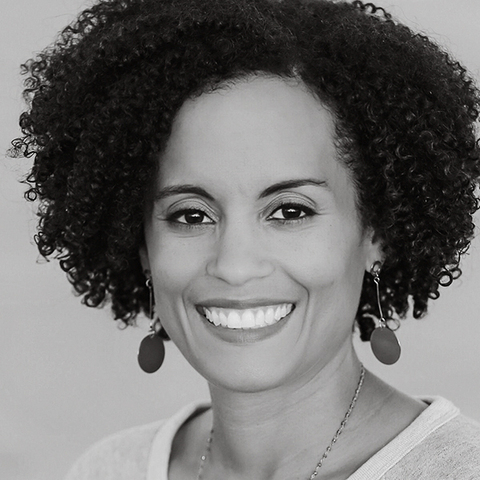Key Takeaways
- Outdated leadership rules, founded on the 19th century's “Great Man Theory,” may still be influencing our views of leadership today.
- Mixed messages and double standards are creating challenges for women in leadership positions, including negative self-talk and feelings of inadequacy.
- Strategies to consider when dealing with these challenges include: self-advocating, seeking out mentorships and support from colleagues, focusing on strengths and accomplishments, and persisting in challenging gender biases.
Listen: Leadership double standards: Why rules for women aren't the same.
In our present-day exploration of effective leadership, we often land on a few qualities that are commonly associated. Qualities such as empathy, strategic thinking, effective communication, and influence often come to mind. At face value, leadership qualities like these make common sense. However, realities begin to shift when we consider who we are looking at when we associate those qualities. The truth is that many of these qualities are interpreted differently when exhibited by women than they are when exhibited by men.
We unpack these double standards in our three-part blog series. Part one addresses why they're here and exactly where they came from.
Where outdated leadership rules come from
Our modern-day use of the word “leadership” can be traced back to the 19th century with what was coined as “Great Man Theory” by writer and historian Thomas Carlyle. In Great Man Theory, Carlyle asserted that to understand leadership, we must study the characteristics of “great men” of the time. Of course, with slavery as a societal backdrop, not all men were considered “great,” and women weren’t even part of the equation.
Thankfully, we’ve progressed a long way from those early, foundational moments of leadership, yet we should wonder if this concept of great men is still permeating subtly through our views of leadership. With women occupying less than 25% of C-suite roles, progress is slow and not substantial enough. The recent phenomenon of women executives breaking up with their workplaces and roles also offers a telltale sign that the leadership environment may not be the same for women as it is for men. Something is not working.
Mixed messages and double standards
These realities are supported by the double standards and contradictory messages that women must deal with in order to advance:
Empathetic leadership is applauded when exhibited by a man; it is merely expected when exhibited by a woman. Strategic thinking often calls for decisiveness and direction, moving others toward a vision that is oftentimes surrounded by uncertainty. While men are described as such and are expected to lead with such decisiveness, women are given harmful labels such as “difficult” or “bossy,” to name a couple on the kinder side.
Communicating effectively and with influence remains a core tenet of leadership. Getting your perspective across clearly, and having others understand and support it, helps organizations recognize their pain points and move toward solutions. Yet, when men are 33 times more likely to interrupt women when they’re speaking than they are other men, it becomes increasingly difficult to communicate with influence.
The internal toll on talented women
Conflicting external messages can take an internal toll on women. One of the most significant challenges for women in leadership is the negative self-talk that they can experience as a result. These mixed messages can lead to feelings of self-doubt and inadequacy. Women can feel that they are not assertive or confident enough, which can lead to questioning their leadership abilities. Women can feel like they have to overcompensate for their perceived lack of leadership qualities, which can be exhausting and emotionally taxing.
It can be disorienting to determine how to “show up” to lead effectively, knowing that your actions, affect, and communication style are all subject to the whims of bias all around you. It becomes fertile ground for moments of imposter syndrome, which I’d argue are often a sign of deficits in the work environment rather than individual deficits.
What you can do
Unfortunately, many women in leadership positions will experience mixed messages about leadership in the workplace. Here are some strategies to consider if you find yourself in this situation:
- Self-advocate and assert your perspective. Don't be afraid to speak up and share your ideas and be confident in your abilities. If you are on the receiving end of conflicting messages, ask for clarification.
- Seek out mentorship and support from colleagues. Having a mentor or supportive colleague can be invaluable in navigating workplace challenges. Seek out individuals who can provide guidance and support, and don't be afraid to ask for help when needed, particularly when trying to make sense of feedback you are receiving.
- Focus on your strengths. It can be easy to get caught up in negative self-talk and doubts about your abilities. Focus on your strengths and accomplishments, and remind yourself of the value that you bring to the organization.
- Be persistent. It can be challenging to change workplace culture, but persistence is key. Change happens in small moments over time, so by continuing to challenge gender biases and stereotypes and advocate for yourself and other women in leadership positions, culture begins to shift.
The rules of the leadership game are not the same for women, let alone for others often marginalized in professional settings. It is well past time that we change them.
Latest.

Is your new AI infrastructure an expensive mistake?
Leadership & Management, Consulting & Operations, Engineering & Technology, Innovation & Emerging Tech

The best marketing automation tools for 2026.
Engineering & Technology, Innovation & Emerging Tech, Marketing & Analytics

Reimagining org design in the fast-paced new world of AI.
Insights from InsideOut, Leadership & Management, Content & Creative




